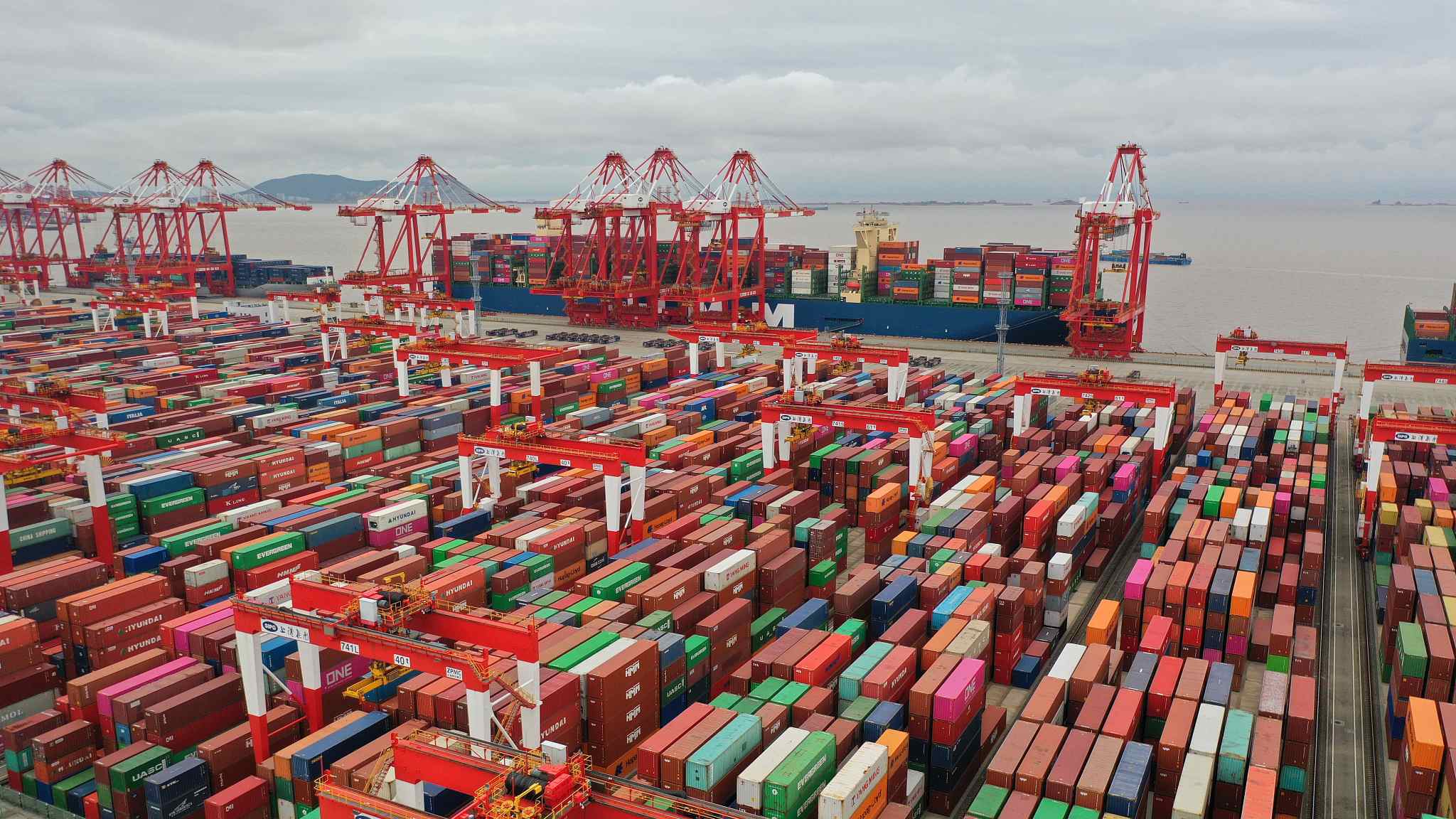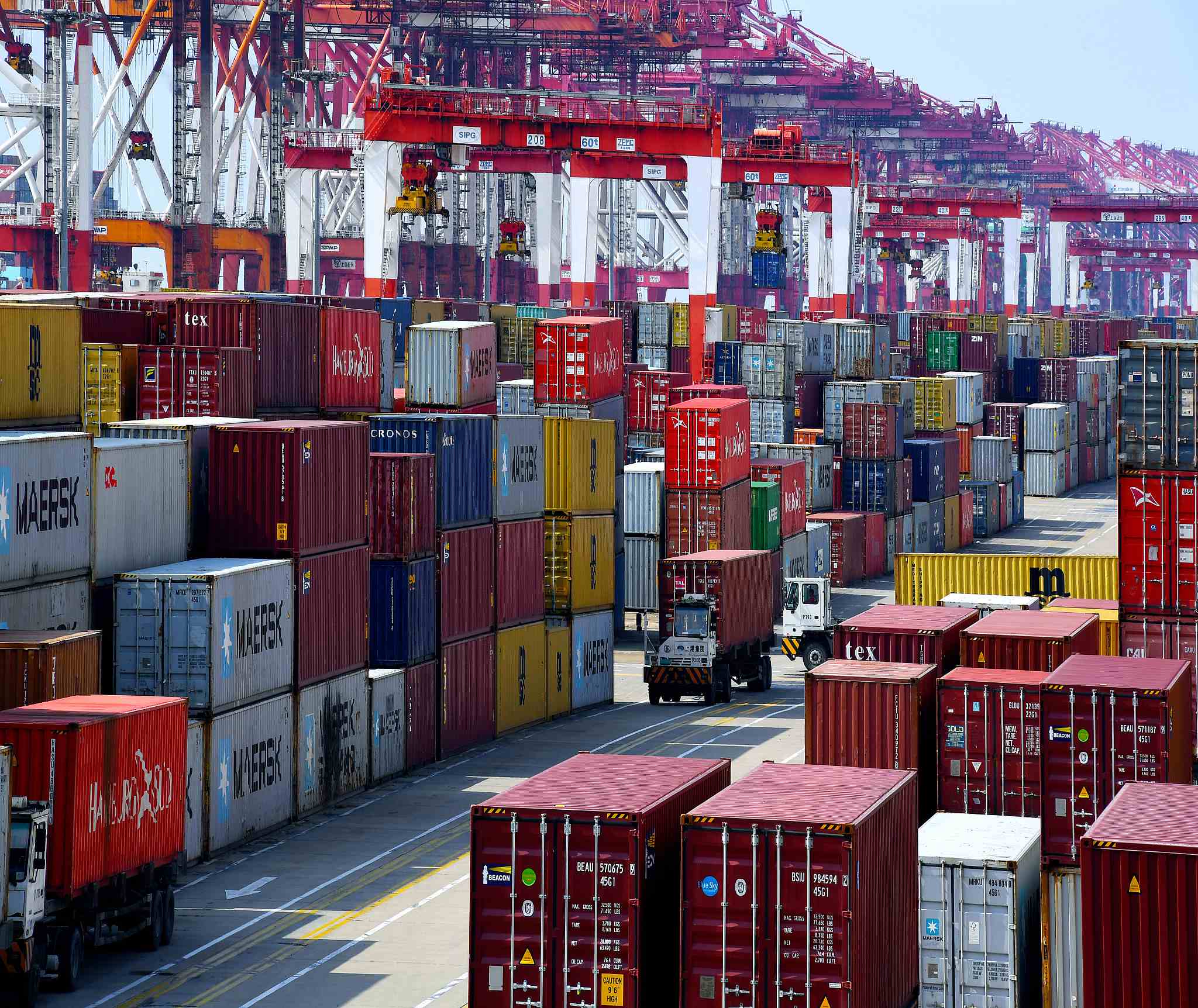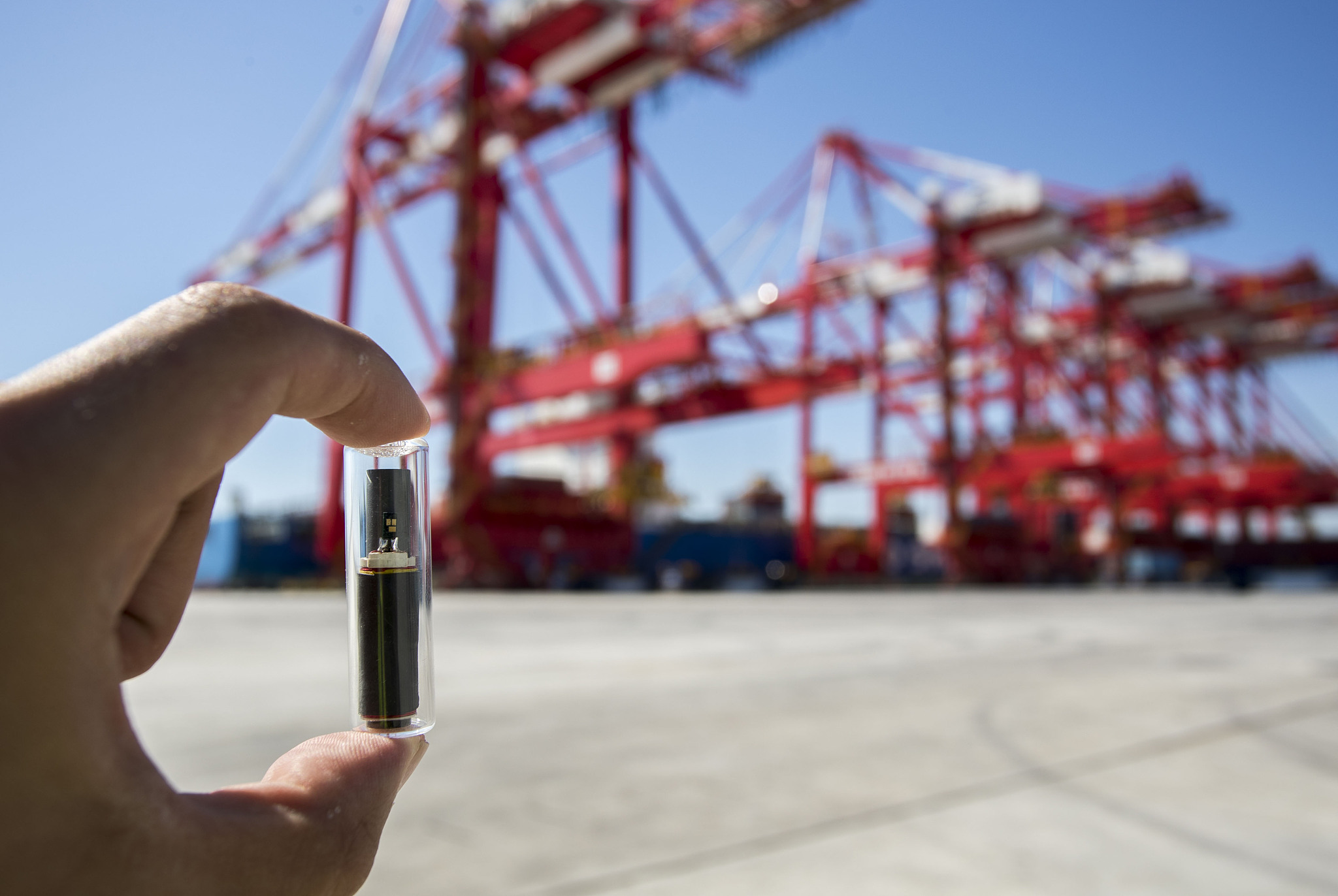
The Yangshan Deep Water Port in Shanghai Municipality, east China, May 19, 2021. /CFP
The Yangshan Deep Water Port in Shanghai Municipality, east China, May 19, 2021. /CFP
East China's Shanghai Port, one of the world's largest harbors, concluded last month with a container throughput of over 4.31 million twenty-foot equivalent units (TEUs), hitting a record high for a single month and breaking the single day-night container throughput record with 158,858 TEUs on August 19, according to Shanghai International Port (Group) Co., Ltd. (SIPG).
It also remained the world's busiest container port in 2020 for an 11th consecutive year with a new record of 43.5 million TEUs.

Containers are packed tightly together at the Shanghai Port, October 17, 2020. /CFP
Containers are packed tightly together at the Shanghai Port, October 17, 2020. /CFP
Part of this is thanks to the Yangshan Deep Water Port.
Located in Hangzhou Bay, it has the world's largest automated container terminal, which started operation in December 2017.
With an area of 2.23 million square meters and a shoreline of 2,350 meters, it can handle 4 million TEUs per year.
But busy as it is, there are hardly any workers to be seen there, thanks to a fully automatic management and control system developed by SIPG, which helps realize a whole-process intelligent operation, including container loading and unloading, horizontal transportation and yard loading and unloading.
Connected with the major data and information platforms of Shanghai Port, the system organizes on-site production efficiently through a scheduling module and collaborative process control system.
Terminal operators who used to work on site now work inside the control room, where they can do all their work in front of a computer screen.
Self-developed software makes container shifting faster, easier

The highly automatic Yangshan Deep Water Port, April 18, 2018. /CFP
The highly automatic Yangshan Deep Water Port, April 18, 2018. /CFP
Shanghai was ranked in July among the world's top three shipping hubs for 2021, alongside Singapore and London, according to the Xinhua-Baltic International Shipping Center Development Index Report.
And it has vowed to build a world-class international shipping center by 2025 – efficient, fully functional, open, integrated, green, intelligent and capable of providing strong support – according to its 14th Five-Year Plan (2021-2025).
The automated container terminal is part of this.
It harbors seven berths and can dock container ships as large as 200,000 tonnes.
"We promise our customers that we can complete the loading and unloading of 5000 TEUs within 16 to 24 hours," Huang Xiusong, director of the technology center at SIPG, was quoted by Xinhua as saying.
Properly arranging the transporting process requires taking every detail into consideration, such as which area a ship should dock, how much machinery is needed to unload the cargo and where it should start unloading, from the sides or the middle, Huang added.
The intelligent system, developed by the team itself, has now replaced manual labor in repetitive operations.
In the past, container stowage for a ship would take an experienced stowage engineer three or four hours. Now it has been reduced to 15 minutes, as the automated system can receive all the information from the moment the ship enters the dock, and automatically generate the most efficient solution that can make the whole port work together, said Huang.
More sound working environment for workers
The automated remote control technology has shifted operators who previously worked in the 50-meter-high bridge crane to the control room, where they remotely press a button or push a handle to control the operation based on the real-time information displayed on the screen.
Without remote control technology, the terminal would need at least 700 workers. But now, only about 100 are directly involved in the remote operation of the equipment, SIPG Vice-President Fang Huaijin was quoted as saying by Xinhua.

There are over 60,000 magnetic nails embedded in the ground at the Yangshan Deep Water Port's automated container terminal. /CFP
There are over 60,000 magnetic nails embedded in the ground at the Yangshan Deep Water Port's automated container terminal. /CFP
The automated container terminal is also the first in Asia to adopt indigenous automated guided vehicles (AGVs) and an automatic electrical changing system.
Guided by magnetic nails embedded in the ground, these AGVs, replacing container trucks, transport containers to their destination. It only takes six minutes to replace the battery, and two hours to fully charge it. Moreover, the whole charging process has zero emissions, saving more than 40 percent of energy consumption.
The high degree of automation has contributed to outstanding annual throughput and operation efficiency, according to SIPG. In 2018, the automated container terminal handled 2.01 million TEUs. In 2019, the number expanded to 3.27 million, and in 2020, it exceeded 4.2 million, with the maximum day-night throughput reaching over 20,823 TEUs.
The automated system is also upgrading to fit the port's development.
The technical team aims to establish a full-domain intelligent control system in the future, integrating cloud computing, big data, artificial intelligence and other technical means, to achieve more accurate and secure supervision, more intelligent equipment maintenance, and more efficient and environmentally-friendly production operations.
It is expected to increase the annual handling capacity of individual terminals by more than 50 percent, which means the automated container terminal will have an annual throughput capacity of more than 6 million TEUs by then.

